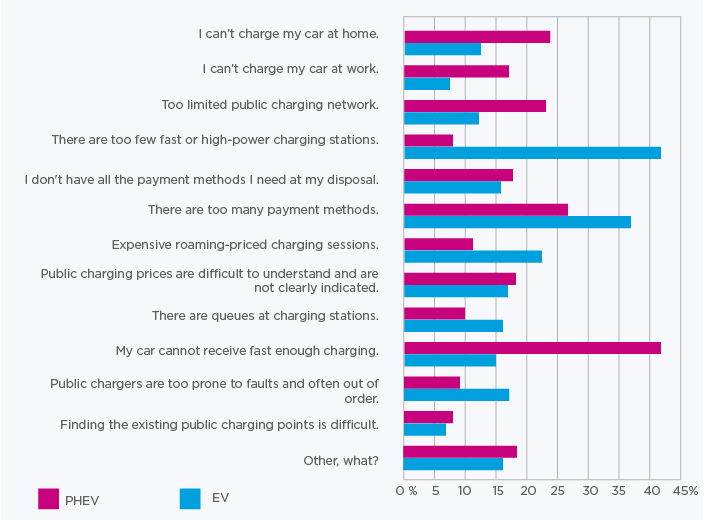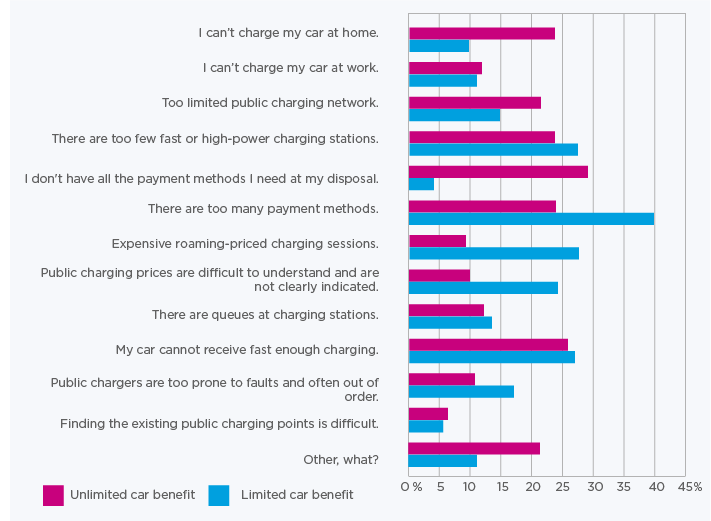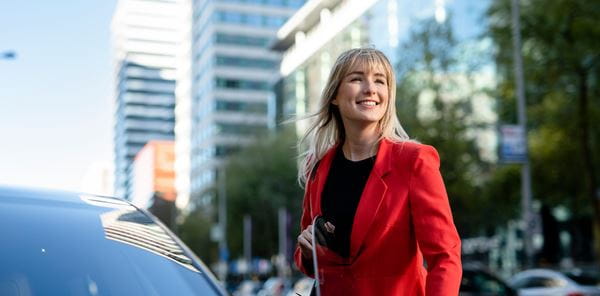
Survey: Electric cars are becoming more common, but the challenges remain
Drivalia's recent survey reveals that although most people who drive a fully electric car or a plug-in hybrid have the opportunity to charge their car at home, the availability and speed of public charging stations are still perceived as the biggest challenges for charging. In addition, the research shows that company car drivers still need more information about the realities of charging and the features of electric vehicles.
Both Finnish registration statistics and Drivalia Lease Finland's own data show that the share of electric vehicles among all new vehicles is growing strongly. As electric cars become more common, Drivalia wanted to arrange a survey in order to find out the charging behavior of company drivers who drive electric cars and plug-in hybrids, as well as their views and experiences about charging.
Home charging is popular
Drivalia's comprehensive survey was answered by a total of 2,213 company car drivers. 55% of them drive a fully electric car and 45% a plug-in hybrid. 38% of hybrid drivers estimate that they drive more than half of their total time on electricity. 2% of hybrid car drivers admit that they do not charge their car at all.
– The research results are used in Drivalia's own development work, so it's great that there are so many respondents! This seems to be one of the most comprehensive surveys investigating the charging behavior of Finnish company car drivers, Drivalia's Head of Commercial Development Tiina Märijärvi estimates.
How much do you estimate you will drive on electric power in total?

Three out of five respondents have a charging station at home, and in addition 17% regularly charge at home from a standard Suko plug. So only 23% say that there is no home charging option. When broken down by car type, home charging stations are clearly more common among all-electric car drivers than those who drive hybrid cars. The use of electricity, on the other hand, is distributed almost identically regardless of vehicle type: around 80% of drivers charge more than half of the electricity they consume at home.
What proportion do you estimate of the electricity consumed for driving will be charged at home?

When asked about the coverage of the public charging network, 31% state that the coverage is at a good level, 49% see the coverage as reasonably good, although lacking in some places, and 20% feel that the coverage is not yet at a sufficient level for their own needs. Here, the type of vehicle and the availability of home charging have a big impact on the answers: only 7% of all-electric car drivers directly say that the coverage of the charging network is not yet at a sufficient level, while 37% of hybrid car drivers share this opinion.
– The phenomenon is largely explained by the fact that home chargers are more common and ranges longer among all-electric car drivers, Märijärvi states.
The coverage of the public charging network in Finland, based on my own experience, is:

One in five respondents (19 %) say that they charge over half of used electricity at their workplace. Most of drivers who actively charge at the workplace are, naturally, drivers who don’t have a charging station at home.
The challenges are persistent and dependent on the driving force
Based on the research, the biggest charging challenges depend on the type of vehicle. In the responses of those who drive fully electric cars, the biggest challenge (41%) is that there are too few fast or high-power charging stations.
– At the same time, only 19% of all-electric car drivers do not have a charging station at home. Most of the people who drive fully electric company cars charge their cars at home, but still the lack of fast chargers annoys them the most. This is natural due to the increased emphasis of fast charging on longer drives, Märijärvi says.
After the number of fast charging stations, the biggest concerns of all-electric car drivers are the excessive number of payment methods (36%) and expensive charging with roaming prices (22%).
Those who use a plug-in hybrid car, on the other hand, are most challenged by the fact that their car cannot receive fast enough charging (41%). After that, the most common answers were the excessive number of payment methods (27%), the public charging network being lacking (23%) and the fact that it is not possible to charge the car at home (23%).
What do you consider the biggest challenge related to charging your car at the moment?

Differences in challenge experiences can also be seen between benefit types. For those covered by the usage benefit, the biggest challenge is clearly the excessive number of payment methods (40%). After this, the most common causes of annoyance are the lack of fast or high-power charging stations and expensive roaming-priced charging. On the other hand, the biggest challenge for people with free benefits is that they don't have all the necessary means of payment available (29%). In second place is the fact that their car cannot receive fast enough charging (26%).
**What do you consider the biggest challenge related to charging your car at the moment?
**

– The different experiences drivers have had when charging with either free benefits or usage benefits are interesting, but not very surprising. With usage benefits, the driver usually pays for charging themself, which makes the pricing a significant factor. With free benefits, the employer pays for charging and also decides which payment methods are offered for the driver, Märijärvi notes.
New electric car drivers still need guidance
It is clear from Drivalia's survey results and the respondents' open comments that many company car drivers are surprised by the everyday challenges associated with electric cars.
– When looking at all types of vehicles that can be charged, the number of payment methods is perceived as the biggest slow-down, followed by problems related to charging speeds and the coverage of the charging network, Märijärvi sums up.
– At Drivalia, we will develop our instructions even further, because it should not come as a surprise to anyone where you can pay with a certain payment method. From the research results, we also get good input for car policy discussions with companies, for example about the importance of home charging for company car drivers, Märijärvi continues.
Drivalia's survey was answered by 2,213 company car drivers who drive rechargeable cars either leased from or managed by Drivalia. The research was carried out as an online survey from October 25th to November 8th 2023.



